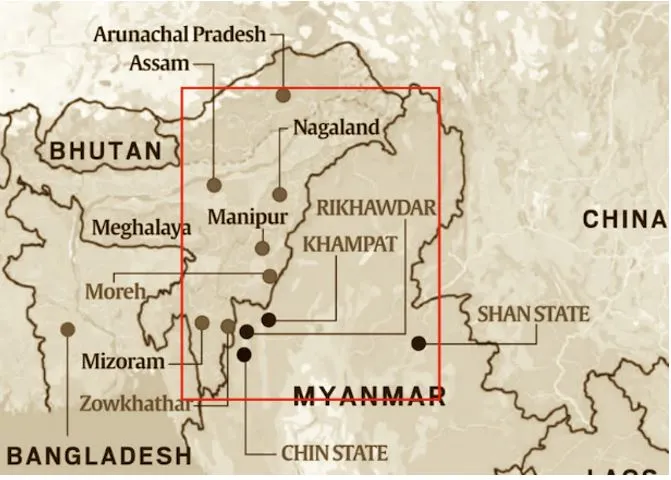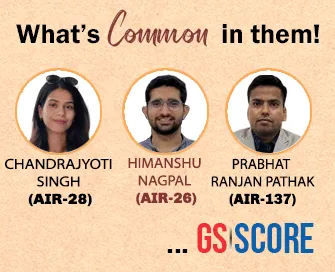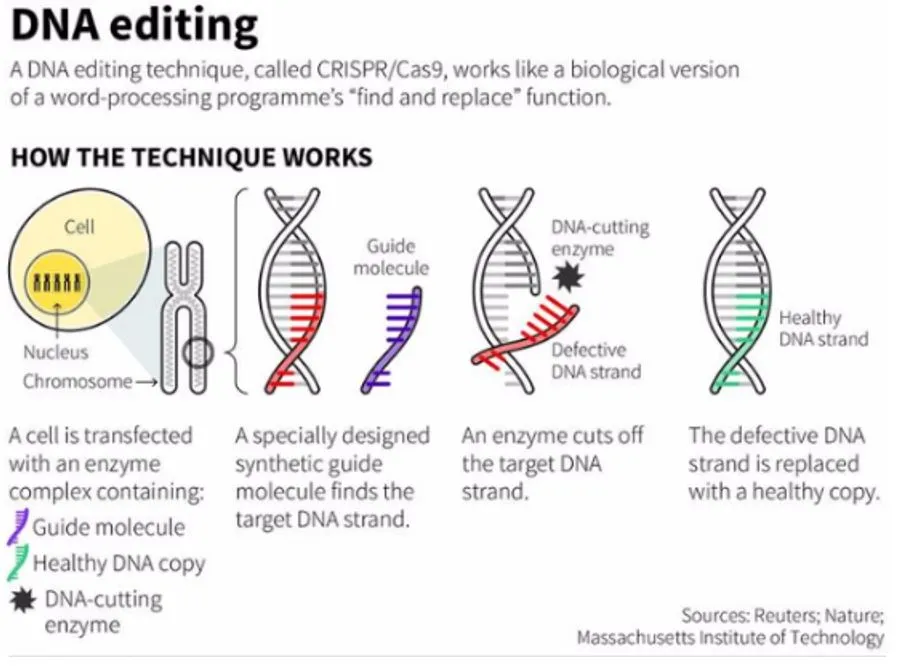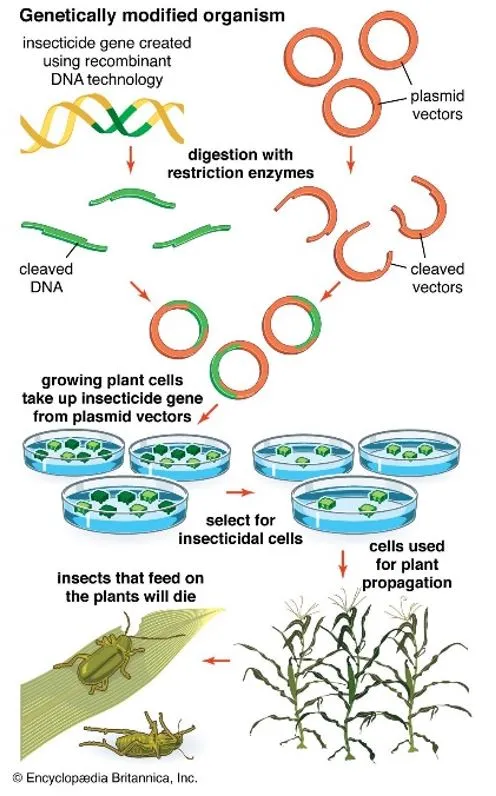

5th May 2025 (11 Topics)
Mains Issues
Context
During Angolan President João Lourenço’s state visit to India, India announced a USD 200 million line of credit for the modernisation of Angola’s defence forces, marking a significant step in strengthening strategic, energy, and development cooperation between the two nations.
Key-highlights of the Visit:
- India and Angola are celebrating 40 years of diplomatic relations, underscoring a consistent foreign policy.
- Defence Ties: India announced a USD 200 million Line of Credit to help modernise Angola’s armed forces. Angola operates Soviet-origin equipment, such as Sukhoi Su-30 jets, which India is well-equipped to repair, service, and overhaul through its public and private defence ecosystem.
- This supports India’s goals under SAGAR (Security and Growth for All in the Region) and boosts its image as a reliable defence partner for Africa.
- Railway connectivity: Angola has three major rail lines, but they are currently not interconnected. India has offered technical and infrastructure support in this area. Importantly, one of Angola’s key railway lines is part of the Lobito Corridor — a major S.- and EU-backed initiative announced alongside the India-Middle East-Europe Economic Corridor (IMEC) at the G20 Summit in Delhi (2023).
- The Lobito Corridor connects the mineral-rich Katanga province in the Democratic Republic of Congo to Angola’s port city of Lobito, via Zambia.
- Angola signed the International Solar Alliance (ISA) Framework Agreement and became the 123rd member of the ISA.
Why this visit matters?
- The visit holds significance because President Lourenço is currently the Chair of the African Union (AU), giving this bilateral dialogue a wider continental relevance.
- Energy Partnership: Angola is India’s second-largest supplier of oil and LNG in Africa, after Nigeria. Nearly 90% of Angola’s USD 3.5 billion exports to India are energy-related. With India being one of the world’s largest energy importers, this energy-security partnership is key to India’s long-term energy strategy.
- Three MoUs were signed in agriculture, traditional medicine, and culture, showcasing India’s soft power and development diplomacy.
India’s Africa Strategy:
- India has re-energised Africa ties—18 of 25 new Indian missions since 2015 are in Africa, signalling diplomatic priority.
- India sees Africa as a resource-rich, youthful, and increasingly influential continent—important for securing energy, gaining market access, and pursuing UNSC reforms.
- India championed African Union’s entry into the G20, positioning itself as a voice of the Global South.
- India’s development model offers an alternative to China’s Belt and Road Initiative (BRI) by avoiding debt dependency and fostering real capacity building.
- Maritime and Security Engagement
- Maritime security is central—India’s AIKEYME naval exercise, radar networks, and collaboration under SAGAR help secure Indian Ocean routes, vital for trade and energy.
- Strategic partnerships with countries like Angola contribute to securing Sea Lines of Communication (SLOCs) from piracy and geopolitical disruptions.
Fact-Box: India-Africa Relations
|


Mains Issues
Context
The United Naga Council (UNC) has demanded the reinstatement of the Free Movement Regime (FMR) along the India-Myanmar border, following its scrapping by the Indian government in February 2023, which disrupted the cultural and economic ties of the Naga communities living across the border. The UNC also seeks the rollback of districts created in 2016, which it argues disregarded the rights of the Naga people.
What was FMR?
- The Free Movement Regime (FMR) allowed individuals from certain hill tribes in India and Myanmar to move freely across the border without a visa, provided they lived within 16 km of the border.
- They were allowed to stay for up to two weeks per visit.
- This system helped maintain cross-border interactions, especially for the Naga communities who have lived in these border regions for generations.
- In 2023, the Ministry of Home Affairs decided to scrap the FMR, citing security concerns, such as the prevention of arms smuggling, drug trafficking, and illegal immigration.
- The UNC argues that this decision severed the historical, cultural, and familial ties between the Naga people on both sides of the border.
- Impact on the Naga Communities: The removal of the FMR has created disruptions in the lives of many Naga tribes, especially those from the Tangkhul, Anal, Moyon, Lamkang, and Maring Naga communities.
- These communities live in the border areas between Manipur (India) and the Sagaing Division (Myanmar).
- Their livelihoods, which have historically relied on cross-border trade, familial connections, and cultural exchange, have been severely affected.
- Violation of Indigenous Rights: The UNC argues that the scrapping of the FMR violates Article 36 of the United Nations Declaration on the Rights of Indigenous Peoples (2007).
- This article states that indigenous peoples, especially those divided by international borders, have the right to maintain and develop cross-border relationships for cultural, social, and economic purposes.
- While India did not sign this declaration, it did vote in favor of its adoption, adding weight to the UNC's argument.
- The removal of the FMR, according to the UNC, disrupts these fundamental rights of the Naga people.
The Creation of New Districts in 2016:
- In 2016, the Manipur state government created seven new districts.
- These new districts—Jiribam, Kamjong, Kakching, Tengnoupal, Noney, Pherzawl, and Kangpokpi—were carved out from existing districts, such as Ukhrul, Senapati, Chandel, and Tamenglong, which are areas with a significant Naga population.
- Naga Opposition: The Naga community strongly opposed the creation of these districts, arguing that the move ignored their stakeholders and violated previous agreements.
- The UNC highlights that the creation of these districts dishonored memoranda of understanding between the government and Naga groups, as well as an assurance given by the Centre in 2011 to maintain the status quo regarding the administrative boundaries.
Myanmar Border Sharing
 |


Mains Issues
Context
India is hosting the 7th edition of the Khelo India Youth Games (KIYG), across five cities in Bihar, with some events in New Delhi. The event brings together over 6,000 athletes competing in 27 sports for 284 gold medals. This edition is particularly significant as it showcases the growing sports culture in India, a key part of the government’s broader goal: hosting the 2036 Olympic Games and positioning sports as both a development tool and a driver of soft power.
India’s Sports Sector
- Sports is listed as a state subject in the Constitution of India.
- Sports Authority of India is the premier sports body that is in charge of implementing the sports schemes to promote sports culture in India.
- In India, sports contribute about 1% of the national economy.
- India's sports market is projected to grow to USD 130 billion by 2030 from a market size of USD 52 billion now, accelerating at a CAGR of 14%, according to a recent report.
- The sector is expected to create 5 million jobs and generate USD 21 billion in indirect tax revenue by 2030.
- India ranks 13th among G20 countries in the Think Sports Index, with the US, UK and Australia leading the rankings. The Index evaluates commercial factors, performance and heritage, and sporting foundations.
- Sports is not something restricted to playing area, it has expanded, becoming a career option for thousands of people in the country.
- Sub-Sectors: Physiotherapy, data analytics, sports technology, broadcasting, e-sports, management, etc.
- Factors responsible for expansion: Increased government investment, widespread digital adoption, healthier lifestyles, rising discretionary incomes, and a surge in high-quality sports content.
What Are India’s Soft Powers?
- Soft power refers to a country’s ability to influence others not through force or money, but through appeal, culture, values, and ideas.
- India has developed a strong identity globally through several soft power assets. These include:
- Cultural Heritage
- Democracy and Diversity
- Indian Diaspora
- Digital and Tech Leadership
- Education and Knowledge Economy
- Media and Connectivity
How Sports Will Enhance India’s Soft Power?
Sports is an emerging and powerful form of soft power that India is now actively cultivating.
- National Branding and Global Image: Success in international sports events can shape India’s image as a rising and confident nation. Hosting international events like the Khelo India Youth Games, and potentially the 2036 Olympics, can signal India’s ability to lead, organise, and engage globally.
- Cultural Integration through Sports: Sports allow nations to connect across cultures and geographies. Promoting traditional Indian sports (like kabaddi and kho-kho) internationally can serve as a cultural export, just like yoga or Ayurveda.
- Youth Engagement and Talent Diplomacy: Platforms like Khelo India identify and nurture grassroots talent, creating a large base of young athletes who can become brand ambassadors for the country.
- Economic and Strategic Influence: The global sports industry is a multi-billion-dollar sector. As India builds sports infrastructure and manufacturing, it creates jobs and draws international attention.
- Inclusivity and Inspiration: Sports can project a progressive and inclusive image of India, showcasing how talent from all regions, castes, and genders is being given a platform. Events like the Khelo India Youth Games involve athletes from states like Bihar, Ladakh, and Lakshadweep, reinforcing India’s diversity narrative.
- Showcasing Organisational Capability: Successfully managing large-scale sporting events enhances India’s reputation for logistical excellence, readiness, and international cooperation.
Challenges in India's Sports Landscape
- Infrastructure Gaps: While urban areas have seen development, rural regions still lack adequate sports facilities.
- Resource Allocation: Ensuring equitable distribution of resources to all states and regions remains a challenge.
- Talent Retention: Identifying talent is only the first step; retaining and nurturing athletes through their careers requires sustained support.
- Public Awareness: Increasing public interest and participation in sports, especially in non-traditional disciplines, is essential.
Government Initiatives:
India and the Olympics
|
PYQQ1. Consider the following statements in respect of the Laureus World Sports Award which was instituted in the year 2000: (2021)
Which of the above statements are correct?
Solution: (c) Q2. Consider the following statements in respect of the ICC World Test Championship: (2021)
Which of the above statements is/are correct?
Solution: (d) |


Mains Issues
Context
Agrivoltaics, a concept that integrates solar energy generation with agricultural production, is emerging as a promising solution to address India's challenges in food security, energy access, and climate resilience. By installing solar panels above crops, this dual-use approach allows for simultaneous cultivation and electricity generation, offering a sustainable path forward.
What is Agrivoltaics?
- Agrivoltaics involves elevating solar panels—typically 2 to 3 meters above the ground—to create space for crops to grow beneath them.
- This setup not only generates renewable energy but also provides shade and protection to the crops, enhancing their resilience to extreme weather conditions.
- The concept was first proposed in 1981 by German scientists Adolf Goetzberger and Armin Zastrow, who recognized the potential of combining agriculture and solar energy on the same land.
Why is it relevant for India?
- India's vast agricultural landscape, accounting for over 60% of its total land area, faces increasing pressure from climate change, water scarcity, and land-use conflicts.
- Traditional farming methods are becoming less viable, and the demand for renewable energy is on the rise.
- Agrivoltaics offers a solution by enabling farmers to generate income from both crops and electricity, thereby improving their economic stability and reducing dependence on fossil fuels.
How does it benefit Farmers?
- Enhanced Income Streams: Farmers can earn revenue from leasing land for solar installations and selling excess electricity to the grid.
- Improved Crop Yields: The shade provided by solar panels can reduce soil evaporation by up to 29%, conserving water and enhancing soil moisture. Certain crops, such as tomatoes and lettuce, have shown increased yields under agrivoltaic systems due to moderated temperatures and reduced heat stress.
- Water Conservation: Agrivoltaic systems can incorporate rainwater harvesting mechanisms, capturing up to 80% of the rainwater falling on the panels. This water can be used for irrigation and cleaning the panels, addressing water scarcity issues.
- Energy creation: In India’s clean energy transition, the most ambitious target is for solar power, which would need to install an additional 211 GW by 2030—roughly 40 GW a year over the next five years.
Challenges and Barriers
Despite its potential, the adoption of agrivoltaics in India faces several challenges:
- High Initial Costs: The infrastructure required for agrivoltaic systems is more expensive than traditional solar installations, making it less accessible for smallholder farmers without financial support.
- Regulatory Hurdles: India lacks standardized norms for agrivoltaics, leading to ambiguity in project design and implementation. Countries like Japan and Germany have established guidelines that India could adapt to ensure sustainable development.
- Land Use Conflicts: There are concerns about the repurposing of agricultural land for solar projects, which may lead to disputes with local communities and affect food production.
Policy and Institutional Support
- The government has launched initiatives like the PM KUSUM scheme to promote solar energy among farmers.
- However, integrating agrivoltaics into such programs requires policy adjustments and the development of clear standards.
- Collaborations between farmers, developers, and institutions are essential to overcome financial and technical barriers and ensure the successful implementation of agrivoltaic systems.
Global Lessons and Future Outlook
- Countries like Japan and Germany have successfully implemented agrivoltaic systems, providing valuable lessons in design, regulation, and community engagement.
- India can learn from these experiences to tailor solutions that fit its unique agricultural and socio-economic context.
Pradhan Mantri Kisan Urja Suraksha Evam Utthaan Mahabhiyan (PM-KUSUM) scheme
|


Prelims Articles
Context
In a major step towards simplifying electoral processes and digital governance, the Election Commission of India (ECI) is developing ECINET, a comprehensive and user-friendly digital platform that will unify and streamline over 40 of its existing mobile and web applications.
What is ECINET?
- ECINET stands for Election Commission of India Network — a one-stop digital platform integrating various electoral apps and tools under a single, cohesive interface.
- It is designed with an aesthetic UI (User Interface) and simplified UX (User Experience).
- It will replace and subsume over 40 apps, eliminating the need for multiple downloads and logins.
- It enables access through both desktop and mobile.
- Data on ECINET will be entered only by authorized ECI officials to ensure accuracy and authenticity.
- Who Will Benefit? The platform is designed to serve:
- Voters (~100 crore) across India
- Booth Level Officers (10.5 lakh)
- Booth Level Agents (15 lakh) from political parties
- Polling officials (45 lakh)
- Assistant Electoral Registration Officers (15,597)
- Electoral Registration Officers (4,123)
- District Election Officers (767)
- Apps to Be Integrated into ECINET: Some of the key apps being unified under ECINET include:
-
- Voter Helpline App – Voter registration, status checks, and more
- Voter Turnout App – Real-time turnout tracking
- cVIGIL – Citizens can report election violations
- Suvidha 2.0 – Candidate permissions and nominations
- Saksham – Accessibility for Persons with Disabilities
- ESMS – Election security management
- KYC App – Know Your Candidate info


Prelims Articles
Context
The rise in ethanol production in India, primarily from maize, is creating significant changes in agriculture, especially affecting the supply and pricing of maize. The push for cleaner fuels has led to the diversion of maize from traditional uses like livestock feed to biofuel production.
About Maize (Corn)
- Maize is used for multiple purposes: as a food crop, livestock feed, and for industrial purposes like ethanol production.
- Production and Demand:
- India's Maize Production: India produces approximately 32-33 million tonnes (mt) of maize annually.
- Domestic Demand: The domestic demand for maize is around 28 million tonnes.
- Surplus: Before ethanol production surged, there was usually a surplus, with exports reaching 7 mt in 2021-22.
- Key States: Uttar Pradesh, Punjab, Madhya Pradesh, Haryana, and Bihar.
- Shift in Use: The demand for maize has surged due to its use in ethanol production. Ethanol, a biofuel, is made by fermenting maize grains, which contain starch, a primary source of energy. This shift has significantly altered the demand-supply balance for maize in India.
- Impact of Ethanol Diversion:
- In 2023-24, 5 mt of maize was diverted for ethanol production, significantly reducing the amount available for other uses, particularly livestock feed.
- The government's ethanol-blended petrol program has led to maize prices increasing from Rs 14,000-15,000 per tonne to Rs 24,000-25,000 per tonne.
- Byproducts and Impact on Livestock Feed: The process of producing ethanol from maize also generates a byproduct known as DDGS (Distiller's Dried Grains with Solubles), which is a protein-rich feed for livestock, further affecting the demand for traditional protein sources like soybean.
- DDGS from maize contains 28-30% protein, making it a cost-effective alternative to soybean de-oiled cake (DOC), which is more expensive.


Prelims Articles
Context
India unveils the world’s first genome-edited rice varieties—Kamala and Pusa DST Rice 1—promising 25–30% higher yields without foreign DNA.
About
- Kamala and Pusa DST Rice 1 are two new genome-edited rice varieties developed in India to help increase crop yield and deal with climate challenges like drought and salinity.
- Kamala was developed by the Indian Institute of Rice Research (IIRR) in Hyderabad.
- Pusa DST Rice 1 was developed by the Indian Agricultural Research Institute (IARI) in Delhi.
- Significance:
- These varieties are expected to increase rice yield by 25–30%.
- They are not genetically modified (non-GMO) — meaning no foreign genes were added. Instead, scientists made small, precise changes in the rice plant’s own genes using a technology called genome editing.
- They are safe, environmentally friendly, and could be ready for commercial farming in 4–5 years.
- They also perform well under stress conditions like drought, making them suitable for changing climate conditions.
- These rice types are likely to replace popular varieties like Sambha Mahsuri and Cottondora Sannalu, which are widely grown across India.
- Policy and Legal Framework: In 2022, India exempted certain genome-edited crops (Site Directed Nuclease 1 and 2 types) from the strict biosafety rules applied to GM crops.
- This legal change opened the door for quicker deployment of genome-edited crops like Kamala and Pusa DST Rice 1.
Fact Box:Genome Editing in Agriculture
|


Prelims Articles
Context
Researchers at the Indian Institute of Space Science and Technology (IIST) have developed a 3D computational model that simulates how microgravity affects human thermoregulation, with implications for long-duration space missions and astronaut health.
Key Findings:
- Microgravity increases core body temperature, with fluid shifts playing a crucial role in thermal balance.
- Blood redistribution in microgravity significantly affects temperature distribution, making the core and head warmer while the feet and hands cool down.
- The model predicts a 8ºC increase in core body temperature over 2.5 months in microgravity, with higher temperatures during exercise.
- The model validated predictions by comparing them to real-world astronaut data from the Mir and ISS space stations.
Fact-Box: Microgravity
|


Editorials
Context
The strategic and military landscape of the Arctic is rapidly transforming due to intensified geopolitical competition among major powers. As climate change opens new maritime routes like the Northern Sea Route (NSR), countries such as Russia, China, and the U.S. are consolidating their presence, raising concerns over India's limited strategic engagement despite its 2022 Arctic Policy.
Strategic Shift in Arctic Geopolitics
- Geopolitical Militarisation: Arctic states are reopening military bases, deploying submarines, and reinforcing territorial claims, signaling a move away from cooperative frameworks.
- NSR & Global Trade Impact: The melting ice is making the Northern Sea Route navigable, potentially redirecting global maritime traffic away from traditional Indian Ocean routes.
- Great Power Contestation: China’s "Polar Silk Road" and increasing U.S. interest in Greenland underline the Arctic’s shift into a core zone of strategic rivalry.
India’s Current Arctic Posture
- 2022 Arctic Policy Limitations: India's policy emphasizes climate science and sustainability but underplays evolving strategic dynamics and emerging security dimensions.
- Scientific Diplomacy Constraints: Existing Indian initiatives (e.g., Svalbard research station, observer status in Arctic Council) are rooted in a benign multilateral order now eroding.
- Strategic Detachment: India remains largely disengaged from Arctic governance forums and geopolitical coalitions, risking marginalisation in new regulatory regimes.
Recommendations for Recalibrated Arctic Strategy
- Institutional Strengthening: Establish dedicated Arctic desks in MEA and MOD; enable strategic inter-agency consultations and think tank collaborations.
- Dual-Use Partnerships: Collaborate with Arctic democracies on polar logistics, satellite monitoring, and maritime domain awareness without escalating tensions.
- Governance Participation: Proactively engage in emerging Arctic governance platforms concerning shipping norms, digital infrastructure, and blue economy rules.
Practice Question
Q. With the increasing strategic importance of the Arctic, critically evaluate India's current Arctic policy. Suggest reforms that balance climate diplomacy with emerging geopolitical realities.

Editorials
Context
On April 30, the U.S. and Ukraine signed a critical minerals and resource extraction agreement through a joint investment fund. The deal comes amid continuing conflict with Russia and uncertainty over future U.S. military aid, highlighting a strategic shift where natural resources are leveraged for geopolitical support.
Strategic Nature of the Minerals Deal
- Resource-Linked Assistance: Ukraine will grant U.S. access to minerals (e.g., lithium, titanium, uranium, graphite) in exchange for investment-based military support via a reconstruction fund.
- No Explicit Debt-for-Aid Clause: Unlike previous proposals under Trump, the current deal avoids framing past aid as debt but ties future aid to revenue sharing.
- Absence of Security Guarantees: Despite being a part of Zelenskyy’s original "victory plan", the deal does not offer NATO-like or bilateral U.S. security commitments.
Geopolitical & Economic Implications
- U.S. Resource Strategy: The U.S. secures access to strategic minerals critical for clean tech and defence sectors, reducing dependency on China.
- Ukraine’s Bargaining Weakness: The deal reflects Kyiv’s limited leverage, prioritizing economic survival over long-term sovereignty of resource control.
- Precedent for War-Time Resource Diplomacy: Establishes a resource-for-support model that could shape future aid agreements in conflict zones.
- War-Dependent Viability: The success of the deal is tied to the Trump administration’s future policy and war trajectory, making its outcomes highly uncertain.
- Domestic Ratification Hurdles: Ukrainian Parliament must ratify the agreement, which could see pushback over sovereignty and transparency concerns.
- Strategic Autonomy Trade-Off: The deal raises concerns over long-term control of Ukraine’s natural wealth and potential neo-colonial dynamics.
Practice Question
Q. Critically assess the strategic implications of resource-based foreign policy deals in conflict zones, with reference to the recent U.S.–Ukraine minerals agreement. How do such deals impact national sovereignty and long-term security?

Editorials
Context
Several states, in their submissions to the 16th Finance Commission, have demanded an increased share in the divisible tax pool, citing reduced actual transfers due to rising cesses and surcharges. This demand raises critical questions around fiscal federalism, equitable distribution, and efficient public service delivery, especially as states now contribute to 60% of general government spending.
Centre-State Fiscal Dynamics
- Reduced Effective Transfers: Despite a 41% share in the divisible pool, states receive only ~32% of gross tax revenues due to rise in non-divisible cesses/surcharges, which grew from 11.4% (2011–12) to 21.1% (2021–22).
- Centre's Fiscal Constraints: With Centre’s rising obligations and borrowing to fund transfers, increasing overall transfers without expenditure rationalisation may strain Union fiscal health.
- Need for Transfer Composition Reforms: Rather than only increasing the size, rebalancing tied vs untied funds could improve fiscal autonomy and incentivise better governance outcomes.
Challenges with Untied Transfers
- Quality of State Expenditure: Rising revenue deficits in states like Punjab and Karnataka indicate borrowing is often used for unproductive, non-merit expenditures rather than capital investment.
- Cash Transfer Schemes Proliferation: 14 states now implement quasi-universal income support, amounting to 0.6% of GDP, often funded through expenditure switching or borrowing, raising sustainability concerns.
- Potential Misallocation Risks: Without accountability, more untied funds may fuel populist subsidies (e.g., free power/water) rather than productive infrastructure or human capital development.
Equity and Decentralisation Implications
- Inter-State Disparities: Large variations in public spending (e.g., Bihar vs richer states) question whether untied funds will promote horizontal equity or further resource misuse.
- Third-Tier Fiscal Devolution: India lags behind global peers (e.g., China, South Africa) in empowering local bodies; enhanced state-level fiscal space may or may not translate into greater decentralisation.
- Public Service Convergence: Rebalancing transfers could improve comparable service delivery standards, but must be paired with performance-linked incentives and accountability metrics.
Practice Question
Q. In the context of the 16th Finance Commission, critically evaluate the implications of increasing untied fiscal transfers to states. How can India reconcile the goals of fiscal autonomy, equity in service delivery, and expenditure accountability?




